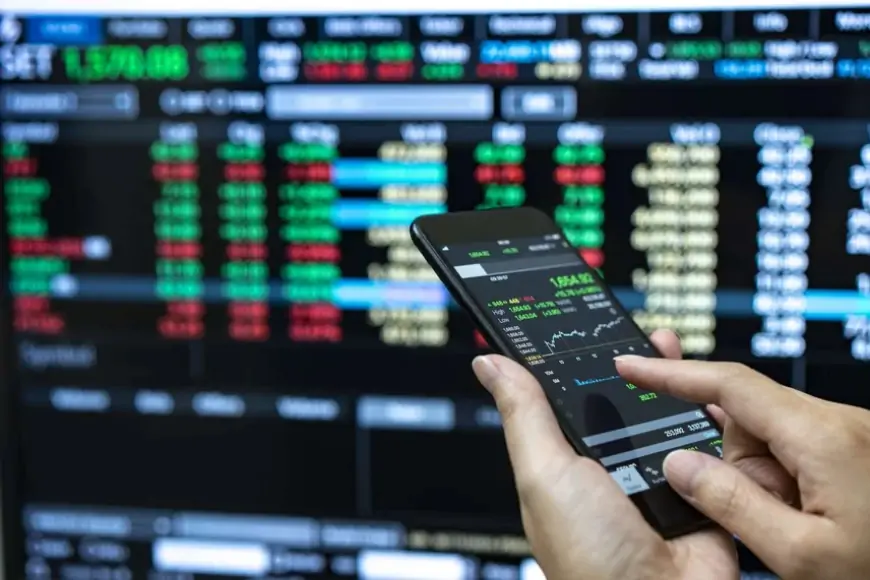Exchange-Traded Fund (ETF) review: Pros and cons
Discover top-performing ETFs, expert analysis, and investment insights in our comprehensive review. Make informed decisions today!

Understanding Exchange-Traded Fund (ETF)
An exchange-traded fund (ETF) functions as a collective investment security traded similarly to stocks. It can mirror diverse assets such as commodities or a broad range of securities, and can even align with particular investment tactics. ETFs cater to investors seeking income, speculative opportunities, capital appreciation, and risk management. The SPDR S&P 500 ETF (SPY) was the inaugural ETF, mirroring the S&P 500 Index.
Understanding the mechanics of ETF
ETFs need registration with the Securities and Exchange Commission. In the U.S., most operate as open-ended funds, regulated by the Investment Company Act of 1940, with modifications from subsequent rules. Open-end funds have no investor limit.
Vanguard's Consumer Staples ETF (VDC) mirrors the MSCI US Investable Market Consumer Staples 25/50 Index, requiring a minimum investment of $1.00. VDC holds shares of all 104 index companies, including well-known names like Procter & Gamble, Costco, Coca-Cola, Walmart, and PepsiCo. Investors owning $1.00 in VDC possess shares representing these companies.
Investors purchase shares in the ETF, not the underlying companies, hence no direct ownership transfer. ETF share prices fluctuate throughout the day, unlike mutual funds, which trade once daily after markets close.
Well-known Exchange-Traded Funds
Here are examples of popular ETFs available in the market. Some ETFs replicate stock indexes, providing diversified portfolios, while others focus on specific industries.
- SPDR S&P 500 (SPY): The longest-standing and most recognized ETF tracking the S&P 500 Index.
- iShares Russell 2000 (IWM): Tracks the Russell 2000 small-cap index.
- Invesco QQQ (QQQ): Tracks the Nasdaq 100 Index, comprising mainly technology stocks.
- SPDR Dow Jones Industrial Average (DIA): Represents the 30 stocks of the Dow Jones Industrial Average.
- Sector ETFs: These ETFs target specific industries like oil (OIH), energy (XLE), financial services (XLF), real estate investment trusts (IYR), and biotechnology (BBH).
- Commodity ETFs: Represent commodity markets including gold (GLD), silver (SLV), crude oil (USO), and natural gas (UNG).
- Country ETFs: These funds track foreign stock indexes but are traded in the U.S. and denominated in U.S. dollars. Examples include China (MCHI), Brazil (EWZ), Japan (EWJ), and Israel (EIS). Others cover a broad spectrum of foreign markets, such as those tracking emerging (EEM) and developed (EFA) economies.
Varieties of Exchange-Traded Funds
Passive ETFs: These aim to mirror the performance of a broad index, such as the S&P 500 or a specific sector or trend.
Actively managed ETFs: These don't track an index but rely on portfolio managers to select securities. While offering advantages over passive ETFs, they can be costlier to investors.
Bond ETFs: These provide regular income based on underlying bonds, which can include government, corporate, and municipal bonds. Unlike the bonds themselves, ETFs don't have a maturity date.
Industry or sector ETFs: These focus on specific sectors or industries, like energy or technology. For example, Blackrock's iShares U.S. Technology ETF (IYW) mirrors the performance of the Russell 1000 Technology RIC 22.5/45 Capped Index.
Commodity ETFs: These invest in commodities such as crude oil or gold, offering portfolio diversification and hedging against market downturns. Investing in a commodity ETF is typically cheaper than physically owning the commodity.
Pros and cons of ETFs
| Pros √ | Cons × |
|
|
Dividend distributions and tax implications
ETFs not only offer investors exposure to fluctuating stock prices but also benefit from dividend payouts by companies. Dividends represent a share of earnings distributed to stockholders. ETF investors receive a portion of these earnings, including interest and dividends, and may receive residual value upon fund liquidation.
Compared to mutual funds, ETFs boast greater tax efficiency. Since most trading occurs on an exchange, ETF sponsors avoid the need for frequent share redemptions or issuances. This reduces tax liabilities, as share redemptions in mutual funds can trigger taxes. When investors sell mutual fund shares, they sell them back to the fund, incurring tax liabilities shared by all fund shareholders.
Formation and redemption of ETF shares
The supply of ETF shares is managed through creation and redemption processes, involving authorized participants (APs), specialized investors. When an ETF needs to issue more shares, APs purchase stocks from the index tracked by the ETF and exchange them for new ETF shares at equivalent value. These ETF shares are then sold in the market by APs for profit.
Conversely, when APs sell ETF shares on the open market, they exchange them with the ETF sponsor for individual stock shares, reducing the number of ETF shares through redemption. Creation and redemption activity varies based on market demand and whether the ETF trades at a premium or discount to its net asset value (NAV), which reflects the overall value of the ETF's assets.











































